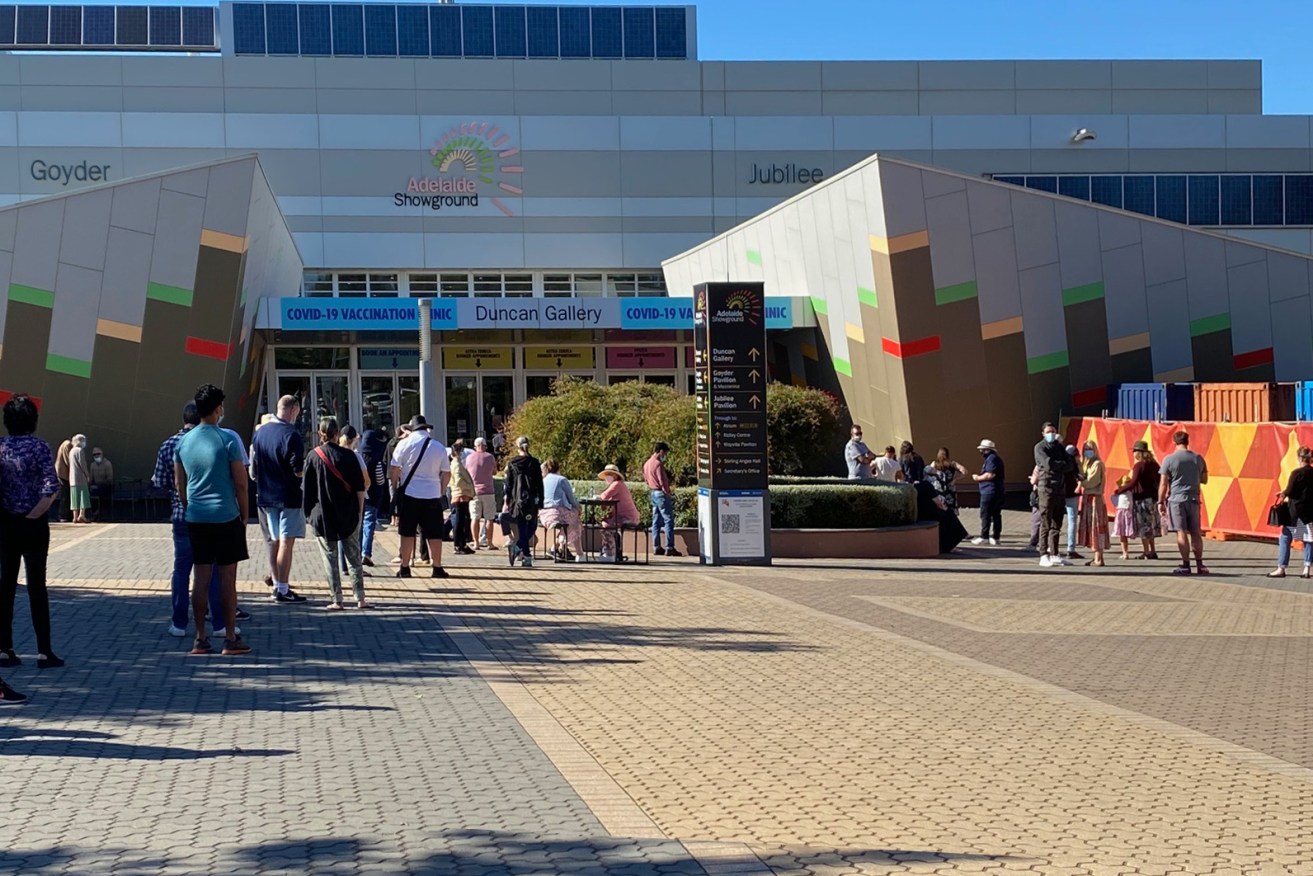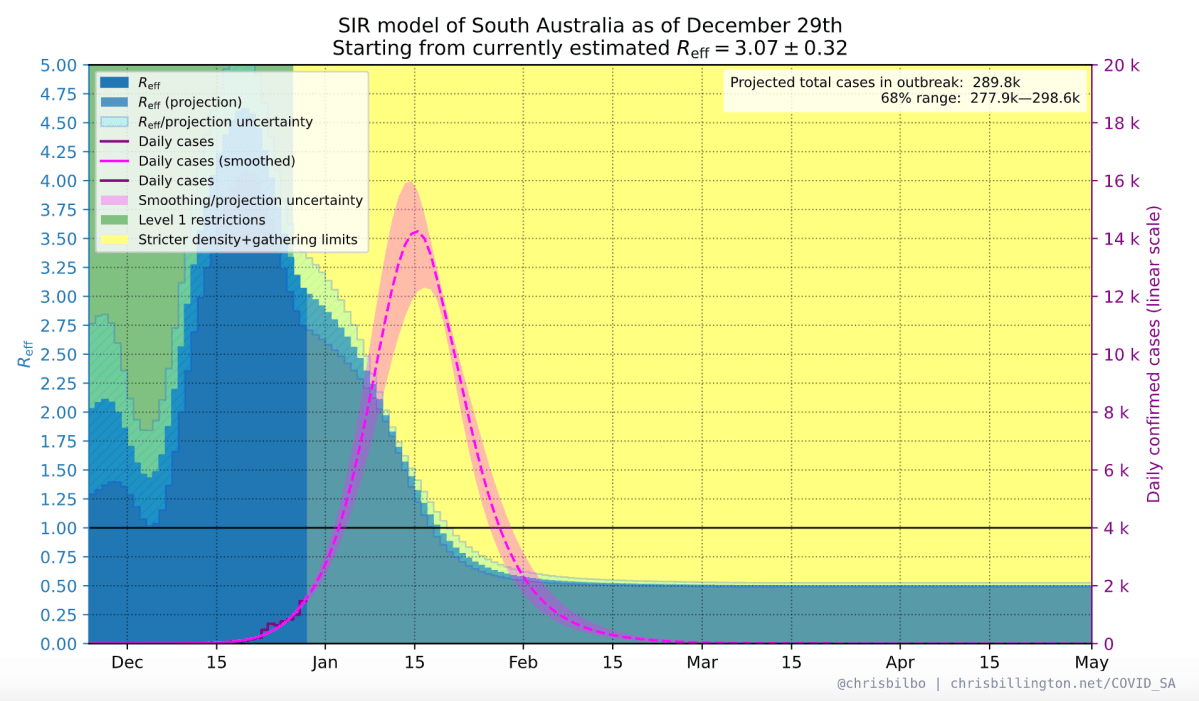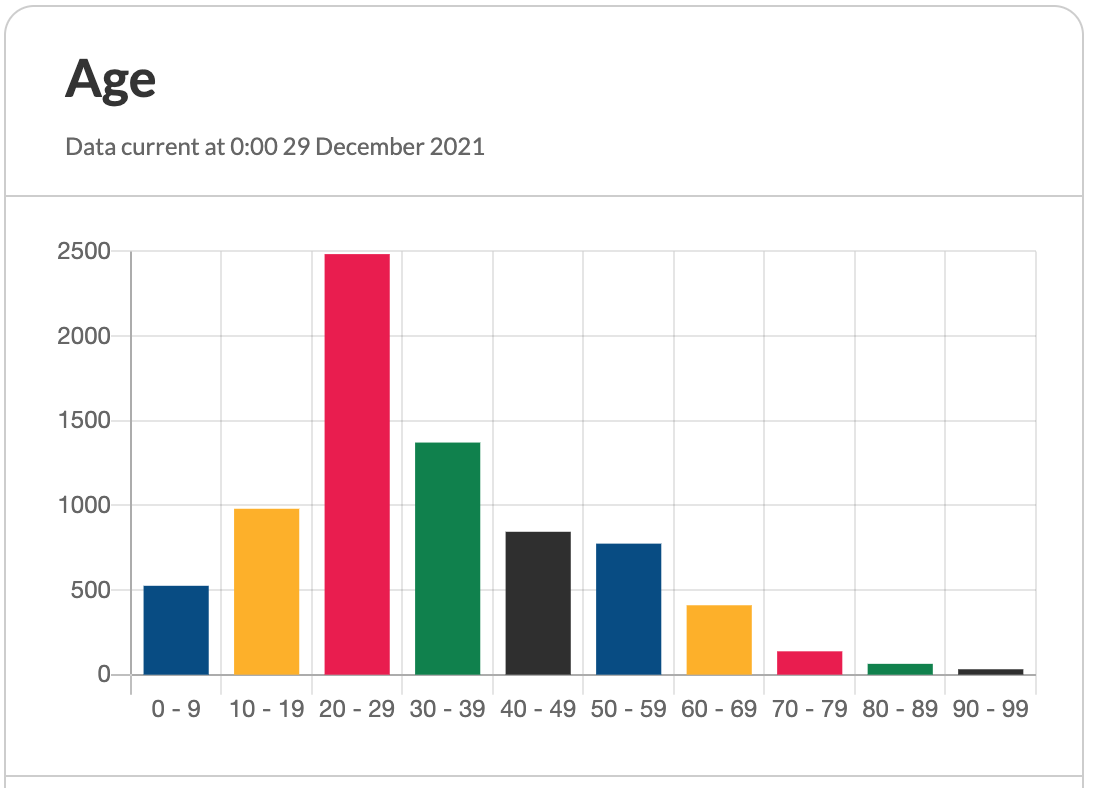‘There’s no stopping this’: SA cases tipped for mid-January peak
South Australia’s daily COVID cases will likely peak at more than 6000 by mid-January based on the trajectory of the state’s current Omicron outbreak, according to projections from a local data scientist and a leading epidemiologist.


A queue for vaccination at Wayville. Photo: Tony Lewis/InDaily
The state’s daily recorded cases have surged over the last two weeks, growing from 25 on December 15 to 995 on Tuesday and 1472 on Wednesday, as daily COVID numbers climb past 12,000 in New South Wales and 5000 in Victoria.
SA Health estimates around 81 per cent of South Australia’s infections are the highly transmissible Omicron variant.
University of South Australia epidemiologist and biostatistician Professor Adrian Esterman said SA’s cases were doubling roughly every three days and his projections showed a caseload peak in early January.
“I’m estimating about 6000 cases a day by the 9th of January,” Esterman told InDaily.
“That’s got quite broad confidence intervals but nonetheless that’s the sorts of numbers we’re talking about.”
Asked what impact the case surge would have on hospitalisations, Esterman said: “It really depends on what the rate is at the moment.”
SA Health said that on Wednesday there were 37 patients in hospital, including four people in intensive care and one man in his 30s on ventilation. Around 0.58 per cent of the state’s 6313 active cases are hospitalised, although Premier Steven Marshall said today he expects about one per cent of Omicron cases to require hospitalisation.
Esterman said: “At the moment it’s quite modest, but that will go up as numbers go up.”
The former World Health Organisation epidemiologist highlighted that the outbreak modelling provided to SA Health by the University of Adelaide in October – before the Omicron variant was identified – estimated that a high-end “worst-case scenario” of 4000 cases a day could happen if authorities adopted a “partial” test, trace, isolate and quarantine (TTIQ) regime.
Esterman said increased demands on testing sites and contact tracers had forced SA Health to adopt the partial TTIQ regime, and the state’s Omicron numbers would therefore go “way past” the model’s worst caseload projections.
“That modelling was based on Delta, and the second thing was that model didn’t take into account people coming into the state who were infected,” he said.
“So basically, the modelling is way out, and the real issue is will we be able to manage?
“What we know at the moment of course is that our hospital system is already struggling with ambulance ramping [and] a big shortage of nursing staff.
“So I think we’re going to struggle.”
Esterman said the “good news” was the epidemic curve would likely go down in the second half of January.
“If we can hold off until then, then I think we’ll be okay, but it’s going be tight for a few weeks,” he said.
Esterman’s projections are broadly in line with estimates from Melbourne University research associate and Adelaide University automation engineer Dr Chris Billington, who has been modelling the trajectory of COVID-19 outbreaks across the country.
Billington’s compartmental SIR model has South Australia’s daily recorded cases peaking between 12,000 and 16,000 a day by January 15, although he stressed the projections do not factor in the state’s limited capacity to detect infections through PCR testing.
“We might not see caseloads anywhere near as high as this 15,000 that my model is currently projecting, but the underlying infection rate is likely to be quite high still, it just won’t be showing up in testing,” Billington said.

Chris Billington’s SIR model estimating the trajectory of South Australia’s current Omicron wave. (Graph: supplied)
The postdoctoral researcher said South Australia’s Omicron outbreak was statistically aligned with the spread of the variant overseas, with each case infecting an average of three others.
Despite the State Government imposing new density caps on hospitality and encouraging employees to work from home, Billington said there’s “unlikely to be any amount of suppression that is going to actually bend down the curve in the short term”.
“This matches all of our expectations about the Omicron variant that it spreads with a [reproduction] value of about three,” he said.
“The virus is going to continue spreading at that rate and only slowing due to people having already been infected with the Omicron variant.
“The outbreak is going to peak once the majority of people have been infected already.
“Given that it’s growing so fast, it’s pretty easy to predict when that will be, and this model that I’m running says that’s going to be in about mid-January.
“There’s no stopping this wave.”
However, Billington warned that it was much harder to predict how the increased caseload would impact hospitalisation in South Australia given it remains unclear what percentage of Omicron cases will require hospital admission.
He also highlighted that hospitalisation numbers will be influenced by what demographics the virus initially spreads in.
So far, a plurality of South Australia’s infections during the pandemic have been recorded in the 20-29 age bracket, according to SA Health data, which lists 2484 confirmed infections within the demographic.

SA Health breakdown of the state’s infections by demographic (Graph: supplied).
Only 234 have been recorded in those aged between 70 and 99, according to the same dataset.
InDaily asked SA Health whether the agency was forecasting cases to reach more than 6000 by mid-January and whether the hospital system was prepared for the resulting hospitalisations.
In response, a spokesperson said SA Health has “worked directly with Local Health Networks and a range of stakeholders to create a plan that is flexible enough for the everchanging nature of COVID-19 and will ensure the health system is best placed to handle increasing COVID-19 cases in SA”.
“Our COVID-ready plan is based off of 95 percent of positive cases receiving home or hotel-based care, coordinated by SA Health and delivered in partnership with primary care providers for the community care response,” the spokesperson said.
“We are continuing to learn more about the Omicron strain, its transmissibility and severity.
“Together with all the usual covid safe practices, it appears having a third vaccine dose will be the most effective prevention, which is why we are encouraging everyone who is eligible to book in as soon as possible.”




